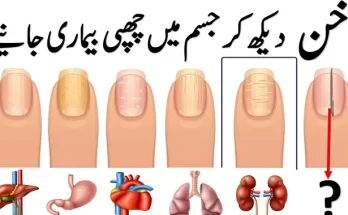
A bright, white smile can significantly enhance your appearance and confidence. Teeth bleaching, also known as teeth whitening, has become one of the most popular cosmetic dental procedures. This comprehensive guide will cover everything you need to know about teeth bleaching, including its benefits, procedure, cost, and potential side effects.
Benefits of Teeth Bleaching
Teeth bleaching offers several advantages that contribute to its popularity:
Enhanced Appearance: A white smile can improve your overall appearance, making you look younger and more vibrant.

Boosted Confidence: A brighter smile can boost your self-esteem, encouraging you to smile more often.
Minimized Stains: Teeth bleaching effectively reduces stains caused by coffee, tea, wine, smoking, and certain foods.
Quick Results: Unlike other dental procedures, teeth bleaching can produce noticeable results in a short amount of time.

Non-Invasive: Teeth bleaching is a non-invasive procedure that doesn’t require surgery or extensive dental work.
The Teeth Bleaching Procedure
Teeth bleaching can be performed both professionally by a dentist or at home using over-the-counter products. Here’s a step-by-step overview of both methods:

Professional Teeth Bleaching
Consultation: The first step is to consult with a dentist to determine if you are a good candidate for teeth bleaching. The dentist will examine your teeth and discuss your goals.

Cleaning: Before the bleaching process, your teeth will be professionally cleaned to remove plaque and tartar.
Protection: The dentist will protect your gums and lips by applying a protective gel or using a rubber shield.

Application of Bleaching Agent: A bleaching agent, usually containing hydrogen peroxide or carbamide peroxide, is applied to your teeth.
Activation: In some cases, a special light or laser is used to activate the bleaching agent and speed up the process.
Rinse and Repeat: The bleaching agent is left on your teeth for a specific period, then rinsed off. This process may be repeated several times to achieve the desired level of whiteness.
Post-Treatment Care: After the procedure, your dentist will provide instructions on how to care for your newly whitened teeth and may recommend avoiding certain foods and drinks that can stain your teeth.
At-Home Teeth Bleaching
Choosing a Product: There are various at-home teeth bleaching products available, including whitening strips, gels, trays, and toothpaste. Choose a product that suits your needs and budget.
Reading Instructions: Carefully read and follow the instructions provided with the product to ensure safe and effective use.
Application: Apply the whitening product as directed. This typically involves placing strips or trays on your teeth or brushing with a whitening gel.
Duration: Follow the recommended duration for each session. Overuse can lead to tooth sensitivity and damage.
Consistency: At-home whitening products may take longer to show results compared to professional treatments. Consistency is key to achieving noticeable results.
Cost of Teeth Bleaching
The cost of teeth bleaching varies depending on the method used and the extent of treatment required. Here’s a general breakdown:
Professional Teeth Bleaching
- In-Office Treatment: The cost of in-office professional teeth bleaching ranges from $300 to $1,000 per session. This method provides the quickest and most effective results.
- Take-Home Kits: Dentists may offer take-home bleaching kits that cost between $200 and $400. These kits are custom-made for your teeth and provide gradual whitening over a few weeks.
At-Home Teeth Bleaching
- Whitening Strips: Over-the-counter whitening strips cost between $20 and $50 for a month’s supply.
- Whitening Gels and Trays: These products range from $30 to $100, depending on the brand and concentration of the bleaching agent.
- Whitening Toothpaste: Whitening toothpaste is the most affordable option, costing between $5 and $20 per tube. However, it offers the least dramatic results.
Possible Side Effects of Teeth Bleaching
While teeth bleaching is generally safe, it can cause some side effects. It’s essential to be aware of these potential issues before undergoing the procedure:
- Tooth Sensitivity: One of the most common side effects is increased tooth sensitivity. This occurs because the bleaching agents can temporarily weaken the enamel. Sensitivity usually subsides within a few days after treatment.
- Gum Irritation: Bleaching agents can irritate the gums, causing redness and discomfort. Professional treatments typically include protective measures to minimize this risk.
- Uneven Whitening: Teeth with different shades or those with fillings, crowns, or veneers may not bleach evenly, leading to a patchy appearance.
- Overuse and Damage: Excessive use of bleaching products, especially at-home treatments, can damage the enamel and lead to permanent tooth sensitivity and decay.
- Temporary Results: Teeth bleaching is not permanent. The duration of the results varies depending on your lifestyle and oral hygiene habits. Regular touch-ups may be needed to maintain the desired whiteness.
FAQs About Teeth Bleaching
1. How long does teeth bleaching last?
Answer: The longevity of teeth bleaching results can vary widely depending on individual habits and oral care. On average, professional teeth bleaching results can last from six months to three years. Factors such as smoking, drinking coffee, tea, or wine, and poor oral hygiene can shorten the duration of the whitening effects. Using a whitening toothpaste and avoiding stain-causing foods and drinks can help prolong the results.
2. Is teeth bleaching safe for everyone?
Answer: Teeth bleaching is generally safe for most people; however, it is not recommended for certain groups. Pregnant or breastfeeding women should avoid teeth bleaching due to the lack of research on its effects during pregnancy.
3. Can teeth bleach remove all types of stains?
Answer: Teeth bleaching is most effective at removing extrinsic stains, which are surface stains caused by foods, drinks, and smoking. However, it may not be as effective on intrinsic stains, which are deeper discolorations caused by factors like certain medications (e.g., tetracycline), trauma to the teeth, or excessive fluoride exposure during childhood. In such cases, alternative treatments like dental bonding, veneers, or crowns may be recommended.
Final Words:
Teeth bleaching is a popular and effective way to achieve a brighter smile. Whether you choose professional treatment or an at-home product, it’s important to understand the benefits, procedure, cost, and potential side effects. By following proper guidelines and consulting with a dentist, you can enjoy the advantages of a whiter smile while minimizing risks. Always remember that good oral hygiene and regular dental check-ups are essential for maintaining your newly bleached teeth






